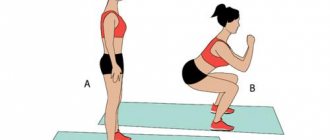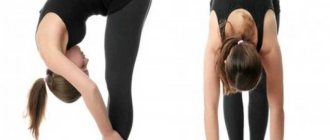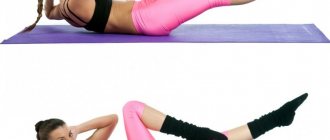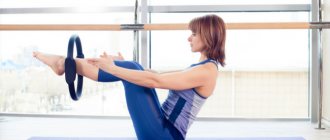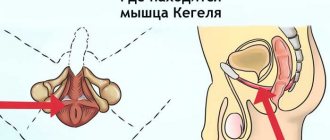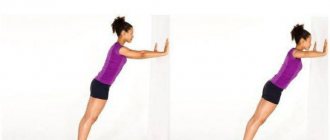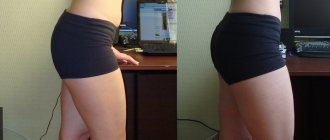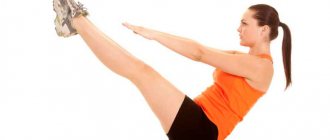What muscles are involved in longitudinal splits?
- Ankle joints.
- Quadriceps (anterior and partially lateral surface): straight, medial, intermediate, lateral.
- Comb.
- Biceps femoris.
- Calf muscles, soleus.
- Sartorial muscle (runs along the front and inner surfaces of the thigh). Responsible for abduction of the legs. Stretching this particular muscle has a decisive function in mastering the cross splits.
- Gluteal muscles.
- Quadratus lumborum muscle.
It is important to understand that in the process of preparing for the longitudinal splits, even the muscles of the shoulder girdle work. After all, the whole body is involved in stretching.
General recommendations
- It is very important to take your time! There is absolutely no need for haste in physical work. Do it slowly, feeling every muscle and body part.
- Follow the recommended technique. When stretching, any sudden, incorrect movement or contraindicated position can have an unfavorable effect. Therefore, it is important to start small and complicate the exercises only with complete confidence in your own abilities.
- In the first stages, simplify the exercises as much as possible: slightly bend your knees as necessary, rest on your hands or forearms, use sports bands in exercises where it is not yet possible to reach your ankle with your hands, place a special sports brick under your feet (you can replace it at home, for example, a book). But don't relax at all. Help your body by gradually complicating and improving each exercise.
How to do the longitudinal splits correctly
Technique for performing longitudinal twine
- Place your hands on the floor.
- Press your palms fully into your hands, minimizing stress on your fingers and wrists.
- Move your back leg smoothly back with your toes along the floor.
- The forefoot moves forward on the heel or with the toe straightened in advance.
- Once you reach the splits, bring your feet into the correct position.
Option for advanced
- While sitting in a longitudinal split, remove the help of your hands.
- Take them to the sides, behind the head or in an overhead grip of the elbow joints.
- Keep your back straight, without arching too much.
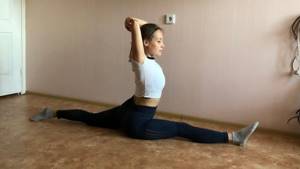
Increasing leg extension in splits
- Sitting in a longitudinal split, lower yourself towards your front leg, slightly tilting your body to the side.
- Keep your legs straight and perform smooth swaying motions with your pelvis.
- Perform rocking movements for 4 seconds on each side.
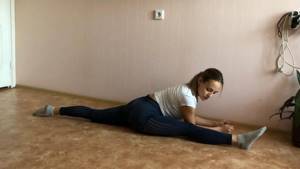
How to do the cross splits - exercises in pictures
Exercises to develop the flexibility necessary for the splits are very useful in themselves. They help improve blood circulation in the pelvic area, increase the mobility of the hip joints, make ligaments more elastic, and strengthen the abdominal and leg muscles. To achieve rapid success, you need to listen to your body and follow the basic rules of stretching, especially during warm-up. You should exercise quite often, but without fanaticism - the body needs time to recover.
Perform these exercises for cross splits regularly and you are guaranteed success.
Developing joint mobility
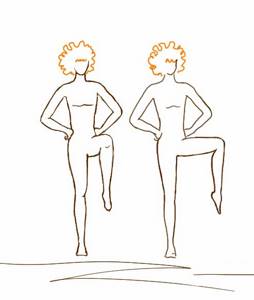
• Stand next to a wall, a chair, or any object that you can hold onto with your hand. Perform circular movements in the hip joint with each leg in one direction and the other. Try to operate with a permissibly large amplitude of rotation, lifting your hip as high as possible and opening it as much as possible.
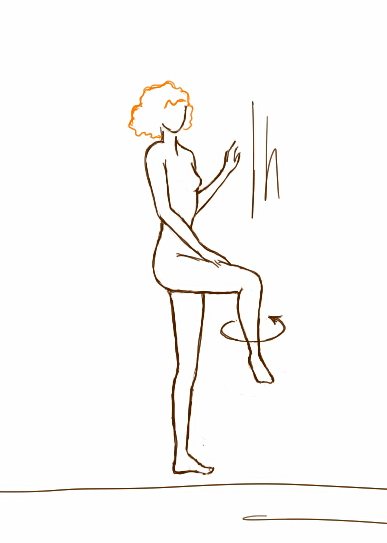
• Raise your right thigh in front of you to a right angle with your body, perform circular rotations with your shin in both directions. Repeat with your left leg too. This exercise will prepare your knees well for cross splits.
Warming up the muscles
• Feet slightly wider than shoulder width, toes pointing out to the sides. Squat until parallel to the floor, spreading your knees and hips wide, keeping your back straight. Repeat 10 times, on the 11th, stay at the bottom for about half a minute. Place your hands on your hips and gently open them.
• Place your legs wide, feet parallel to each other. Do 10 side rolls from foot to foot. Try not to lift your feet off the floor, but roll in a straight line, without lifting your pelvis up. It would be ideal to keep your back straight and your arms extended in front of you.
Stretch the back of the legs as well as the lower back

• Legs wide, palms placed on the sacrum, fingers up. Gently bend back, pull your shoulders and shoulder blades away from your ears, and stand there for 30 seconds. Then bend forward until parallel to the floor, extend your arms in line with your body, hold the position for 30 seconds. As you exhale, bend over and stretch your arms down. Try to straighten your lower back, twisting your tailbone upward, trying to reach the floor with your forearms.
Stretches of the hamstrings, lower back, semitendinosus muscles
• From a sitting position, spread your legs wide to the sides. Straight arms above your head, stretch your whole body up. Keeping your spine stretched, carefully make 10 circular movements with your body clockwise and counterclockwise.
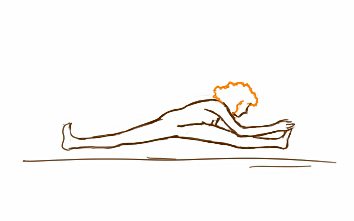
• Stretch your arms above your head, turn your body towards your right leg, stretching your spine, and lean forward. Reach toward your thigh with your stomach, not your chest or head. Try to grab your foot with your hands. If you have enough flexibility, pull your foot towards you and lower your body even lower, straightening your back. Hold this position for 1 minute, repeat on the left side.
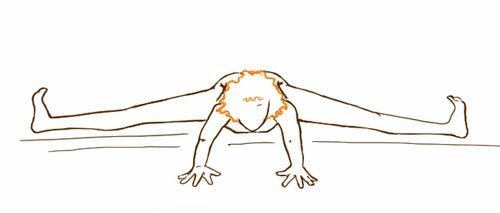
• Next we make a fold. Stretch your spine following your raised arms, and exhale as you bend forward. Keep your spine stretched and aim your stomach toward the floor. Hold a position that is comfortable for you for several minutes. Each time you will bend lower and lower. Make sure your toes are pointing straight up.
Opening the joints, stretching the inner thighs
• Sit with your back against the wall, in a butterfly position. Move your knees up and down a few times, relaxing your hips. Using muscle strength(!), pull your knees towards the floor, then gently press on them with your hands. If your joints are well open, move your heels even closer to the perineum and lean forward, keeping your back straight. Be careful with your knees: if you feel discomfort, reduce the pressure or come out of the pose - it is the hip joints that should be involved here.
Frog
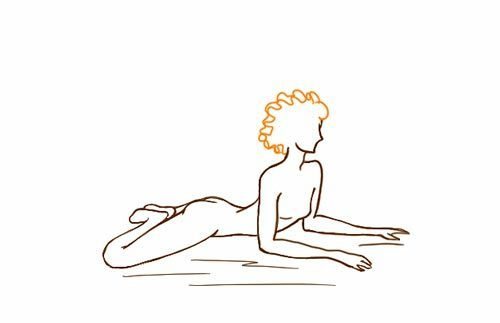
• On all fours, spread your knees wide, bringing your feet together. Gently pull your pelvis toward the floor, arching at the lower back. Move to your forearms. Try to lower your pelvis as low as possible without lifting your feet. It's good if someone holds your feet together, pressing them to the floor. Or you can fix them in the space between the floor and the sofa or radiator. This exercise effectively stretches the groin area.
Adductor Stretching
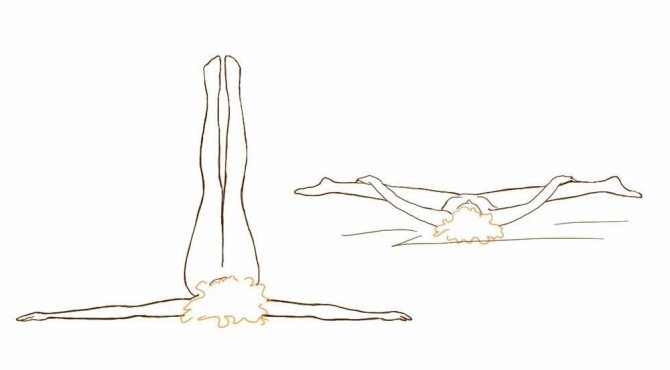
• Lie on your back, lift your legs up along the wall, and then open them as wide as possible. You can gently pull your hips down with your hands. Stay here for about 5 minutes. Collect your legs, press your knees to your chest, and rest a little. Repeat 2 more times.
Preparing for the splits
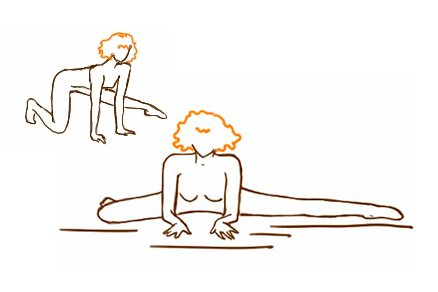
• On all fours, straighten one leg to the side. Sliding along the floor, slowly move apart, gently lowering your pelvis down. Move to your elbows and hold the position for 2 minutes. Repeat on the other side.
Cross twine
• From a standing position, spread your legs as wide as possible, place your hands on the floor, and do 10 push-ups. When you feel that you can move further, spread your legs even wider, trying to put your elbows on the floor. Hold the position for at least 1 minute. Gradually increase the delay time. Subsequently, you can lie down on the floor with your whole body and congratulate yourself on the cross split.
Some tips:
1. For stretching, dress as warmly as possible. This will help keep your muscles warm, making it easier to stretch. 2. Perform each exercise with a straight back - this will increase the effectiveness of stretching and also protect you from injury. 3. Keep your breathing even - it will be easier to relax. 4. Hold each position for at least 1 minute, gradually increasing the time - this way you will achieve results faster. 5. If you just started exercising and you don’t have enough flexibility to reach something (your feet, for example), use a strap.
How to stretch the back leg in a longitudinal split
In order for the leg to be straight, without bending the knee when moving back, each part of it must be well stretched. Therefore, it is necessary to perform leg warm-up and basic stretching exercises. During the training process, monitor the active work of the ankle and high-quality muscle development; they should be stretched regularly. Do not try to immediately go into the splits; first you need to prepare in detail, stretch your muscles and joints to the required level. The difficulty of maintaining a straight back leg in the splits lies only in the insufficient degree of preparation for the exercise and incorrect technique (excluding structural features or contraindications). Read more about leg stretching →
Exercise “Butterfly” for cross splits
A very beautiful and at the same time effective exercise that allows you to carefully prepare your muscles before doing the splits.
- So, take your starting position - sit on the floor and do not forget to pull your buttocks out from under you so that the contact of your thighs with the surface of the floor is maximum. This is a necessary safety requirement, and it also reduces the risk of injury.
- Bend both legs at the knees, bringing the feet together.
- To overcome the initial resistance, you can support your legs with your hands.
- When your body gets used to this position, place your hands on your knees and begin to lift them (knees) up and down. When lowering, try to keep them touching the floor.
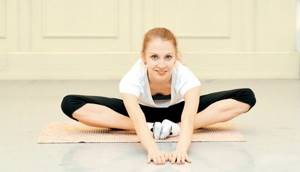
- From the outside, your movements should resemble the flapping of butterfly wings.
- If this exercise seems too simple for you, modernize it by leaning forward. And remember about a straight back!
It is enough to do “Butterfly” once per lesson. Determine the number of times you raise and lower your knees yourself.
Common longitudinal twine mistakes
- Turn the knee of the back leg to the side. The kneecap of the back leg should be firmly on the floor, with the heel of the foot pointing upward. Hips point forward, not to the side.
- Turn the shoulder and body to the side. The body position should be level, the back should be straight, without bending, the shoulders should be straightened.
- Lack of auxiliary equipment. If the stretching is not yet perfect, it is necessary to use special equipment (a pillow under the ankle/knee of the back leg for better gliding, books to support the arms) in order to perform the splits without violating the technique.
- Leading the front leg to the side. The legs in the longitudinal split should be positioned in a straight line, the pelvis directed clearly forward, the front leg exactly in front.
- Twisted back and shoulders . Sometimes insufficient stretching of the back muscles does not allow you to keep it in a straight position. Comprehensive stretching of the whole body is important here.
Necessary exercises for stretching muscles
Warm-up, warming up the muscles. How to do it, how much. The main mistake made by those who want to do the splits is starting classes without prior preparation. Before you begin physical exercises to stretch the ligaments, as mentioned above, you need to warm up and stretch the muscle tissue well. To do this, it is enough to spend some 10 or 15 minutes on light physical exercise:
- running in place
- jumping rope,
- jumping in place,
- squats,
- circular rotations with legs bent at the knees,
- dancing.
Below are the necessary exercises to obtain the desired result.
Muscle stretching
1. To perform it correctly, you need to sit on the floor and spread your legs in a V. The wider they are apart, the better. While maintaining this position of your legs, bend your body towards your right leg, trying to clasp your feet with your hands. Then repeat the bends to the center and to the left leg. Stretch, try to get as low as possible. You need to feel the muscles stretching. Duration - 1 min.
FAQ
How quickly can you do the longitudinal splits?
Only regular training will help you achieve results quickly, keeping a break of 1-3 days between them is mandatory. Muscles need time to recover. From daily activities, the body gets tired, overexerted and productivity drops.
How long does it take to do the longitudinal splits?
From several months to several years. The speed of obtaining results depends on the level of initial training and individual characteristics. Mastering the longitudinal split and achieving flexibility are not aspects that require haste. Especially for those who are learning exercises from scratch.
Is it possible to do the longitudinal splits at home?
Definitely yes. You can learn how to do the splits and master stretching at home. The main thing in this matter is to master the technique, add variety to your training, devote time to it often and regularly, follow the recommendations, take your time and do not lose motivation.
How often should you workout at home?
At first, after 2-3 days, then according to your well-being and mood. Then learning how to do longitudinal splits at home will be faster than it seems.
What can cause a crunch in the thigh during a longitudinal split?
A crunch when stretching, which is not accompanied by pain, is a normal variant and can occur even in absolutely healthy people.
The negative impact and manifestation of crunching (clicking) may be due to the following reasons:
- Excessive stress on the joint, too frequent training.
- Sedentary lifestyle, lack of regular physical activity.
- The body is not prepared for training, the lack of warm-up exercises/active warm-up for the splits.
- Fundamentally incorrect exercise technique.
- Presence of contraindications to stretching, diseases of bones and joints.
Also read: How to do back stretches → Morning stretching exercises → Stretching exercises before bed →
What is twine
Twine refers to an exercise that is aimed at stretching ligaments and muscles. The exercise involves spreading your legs in directly opposite directions. When the split is performed correctly, the legs form a single straight line. Correct execution of the exercise does not cause pain and does not create stiffness in movements. This result is ensured by proper stretching.
Main types
Today, in gymnastics, acrobatic and dance practice, you can find a large number of varieties of splits. Some can be accomplished after just a couple of months of intense training. Other types require complex and daily work.
Transverse
It consists of maximally spreading the legs in opposite directions. Such a split is not given to everyone, even the most flexible people. About 14% of people on earth will not be able to perform this exercise due to the peculiar structure of the pelvis. It has been noted that cross splits are most convenient for men to perform, since women’s hips are much more difficult to perform such exercises.

Longitudinal
An exercise in which the legs are spread forward and backward. The position represents a straight longitudinal line made by the legs. It is more difficult for men to perform this exercise, since they have a much more powerful hamstring, which is difficult to develop and straighten. Longitudinal twine is divided into right-handed and left-handed. Depending on which leg is put forward, the name of the split is given. Transverse and longitudinal twine have their own subspecies, which include certain features, nuances and additional elements.

Classical
The classic split is understood as an acrobatic element, as a result of which the angle formed between the inner surfaces of the thighs is 180 degrees. This is the most common exercise, landing on the floor.

Overweight or negative
Implies that the angle between the legs will be much greater than 180 degrees. The gymnast, standing on the supports, begins to do the splits. It turns out that the feet are slightly higher than the hip part of the body.

Horizontal
It is directed along the horizon line.
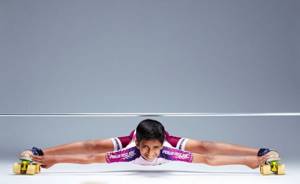
Vertical
The exercise is performed while standing, with the right or left leg going up when swinging.

Twine on hands
Performed in a standing position on your hands or resting on your elbows. First, the gymnast takes a vertical position, and only then begins to spread his legs.

Half twine
This is a very effective stretching exercise. Initially, it can only be completed after some time of preparation. Half splits prepare your body well for a full exercise. In order to perform it, you need to get down on the floor. One leg is extended, the other is bent to the maximum level towards the floor. In this position, you need to fix your feet and try to stretch your body towards the outstretched leg.
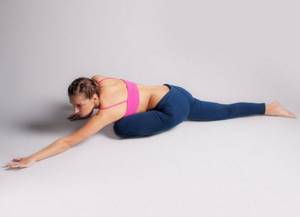
How long before you can sit down
The question of timing is purely individual. It all depends on age, the number of workouts and their intensity. If a person already has experience in gymnastic procedures, and stretching is done regularly, then he can fully do the splits in just 1-2 months. The main condition is intensive training. If a person has just started stretching, it will take much more time.
It will take three to four months to get into a full split. The conditions for this are daily exercise and a properly selected set of exercises.
After 20 years, a person develops physiological characteristics that can affect both a decrease and an increase in the time required to achieve the goal. Much depends on gender. For example, men have a harder time stretching ligaments and muscles.
Therefore, in order for the average man to do the splits, he will have to spend 5 to 10 months of hard training. Women are much luckier in this regard. Even beginners, exercising regularly three to four times a week, can do the splits after 3 months.
However, before developing an exercise program and moving on to training, you need to understand how realistic this is in your case.
It is possible to do the splits if you do not have a spinal fracture, osteoporosis, osteochondrosis and other chronic diseases associated with blood vessels and the functioning of the circulatory system. It is better to discuss the possibility of such physical activity with your doctor.
